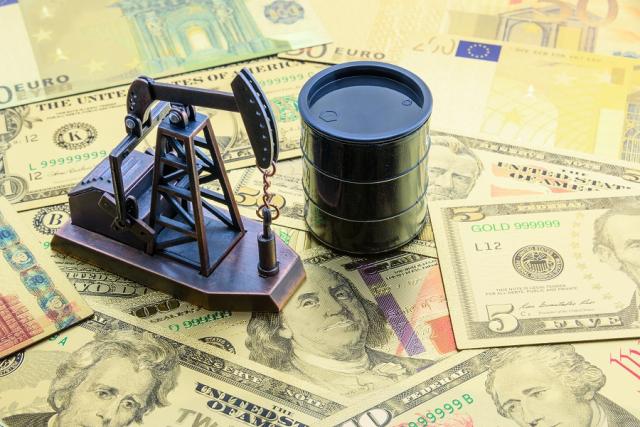
The U.S. Energy Information Administration analyzed the financial reports of the public companies that produce more than a third of all U.S. crude. EIA predicted that E&P companies’ capital expenditures will continue to increase as revenues decline. (Source: Shutterstock.com)
E&P shareholders enjoyed distributions far above their historical average in fourth-quarter 2022 despite an operations cash squeeze caused by lower crude oil prices, according to a government study of 48 publicly traded companies.
The U.S. Energy Information Administration (EIA) analyzed the financial reports of the public companies that produce more than a third of all U.S. crude. EIA predicted that E&P companies’ capital expenditures will continue to increase as revenues decline.
In the fourth quarter, E&P companies’ cash from operations suffered a 20% decline —dropping to $35 billion in the fourth quarter.
The 2022 fourth quarter distribution was the most in five years, reaching nearly $19 billion. That included $10.7 billion spent for share repurchases and $8.2 billion for dividends.

EIA found that “more cash from operations went to shareholder distributions than to any other use, including capital expenditure.” The study defined shareholder distributions as the sum of dividends and share repurchases. About 40% of the share repurchases were from a one-time, $4.3 billion acquisition of common stock by the Oklahoma City-based Continental Resources Inc., as part of plans to take the company private.
The EIA study also found that cost inflation continues to bite, but supply chain constraints appear to be easing. The study noted, however, that “recent cost inflation suggests more capital expenditure spending would be needed today to support similar levels of production compared with past years.”
Forty-two of the companies published guidance that detailed their plans for operations and spending. EIA analysis of the guidance found that companies plan to increase capital expenditure by 5%.
Late last month the Federal Reserve Bank of Dallas reported that 30% of oil and gas firms identified cost inflation as the greatest influence on the profitability of their firm. Another 30% identified the health of the global economy as a primary factor.
The EIA did not study private companies, so its study noted that the findings do not represent the entire upstream oil and gas sector.
Recommended Reading
Liberty Bolsters Mobile Power Business with Acquisition of IMG Energy
2025-03-05 - Liberty Energy Inc. said March 5 it had purchased IMG Energy Solutions as the company expands its mobile power business.
Sitio Fights for its Place Atop the M&R Sector
2025-04-02 - The minerals and royalties space is primed for massive growth and consolidation with Sitio aiming for the front of the pack.
Tamboran, Falcon JV Plan Beetaloo Development Area of Up to 4.5MM Acres
2025-01-24 - A joint venture in the Beetalo Basin between Tamboran Resources Corp. and Falcon Oil & Gas could expand a strategic development spanning 4.52 million acres, Falcon said.
Devon, BPX to End Legacy Eagle Ford JV After 15 Years
2025-02-18 - The move to dissolve the Devon-BPX joint venture ends a 15-year drilling partnership originally structured by Petrohawk and GeoSouthern, early trailblazers in the Eagle Ford Shale.
Huddleston: Haynesville E&P Aethon Ready for LNG, AI and Even an IPO
2025-01-22 - Gordon Huddleston, president and partner of Aethon Energy, talks about well costs in the western Haynesville, prepping for LNG and AI power demand and the company’s readiness for an IPO— if the conditions are right.
Comments
Add new comment
This conversation is moderated according to Hart Energy community rules. Please read the rules before joining the discussion. If you’re experiencing any technical problems, please contact our customer care team.





